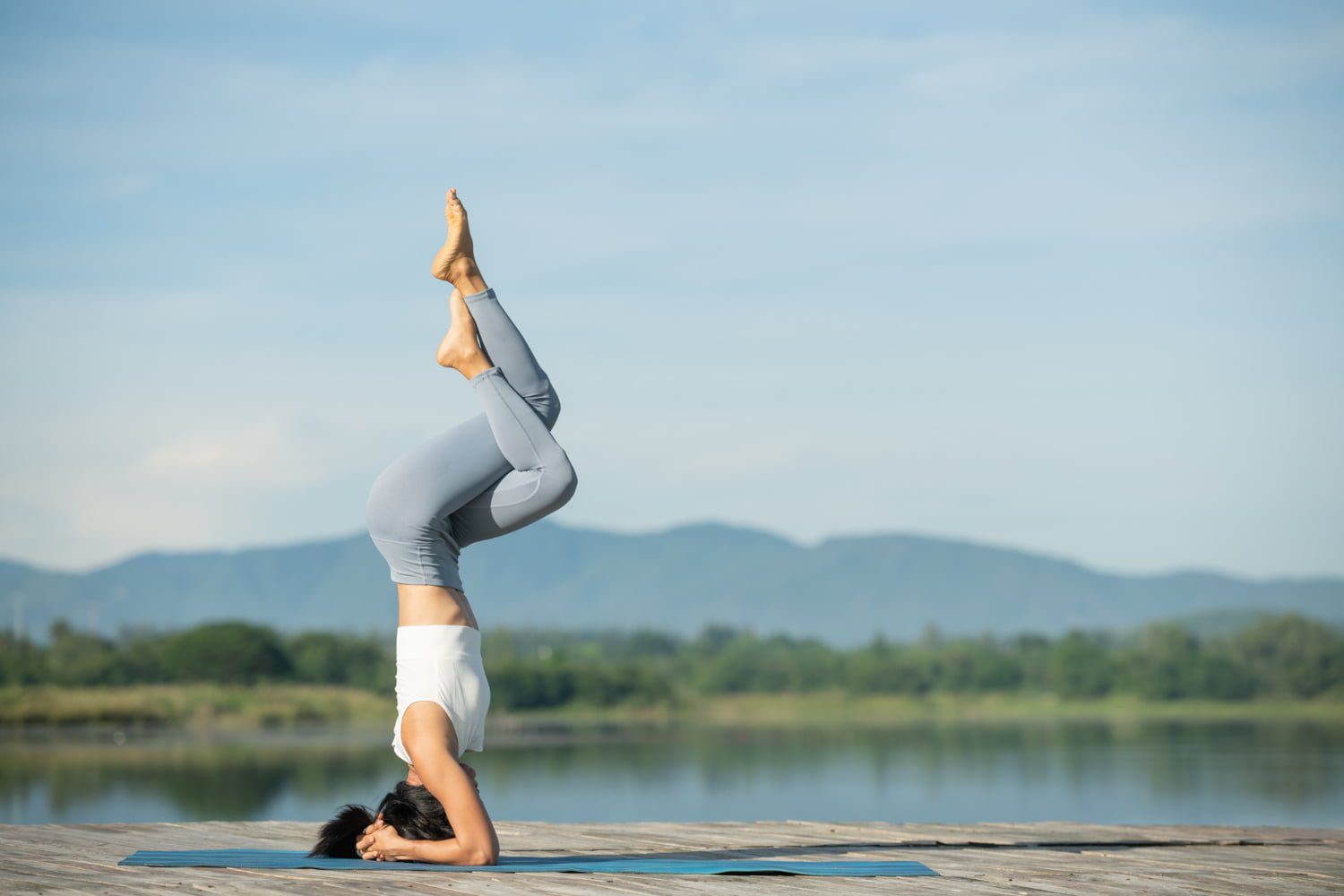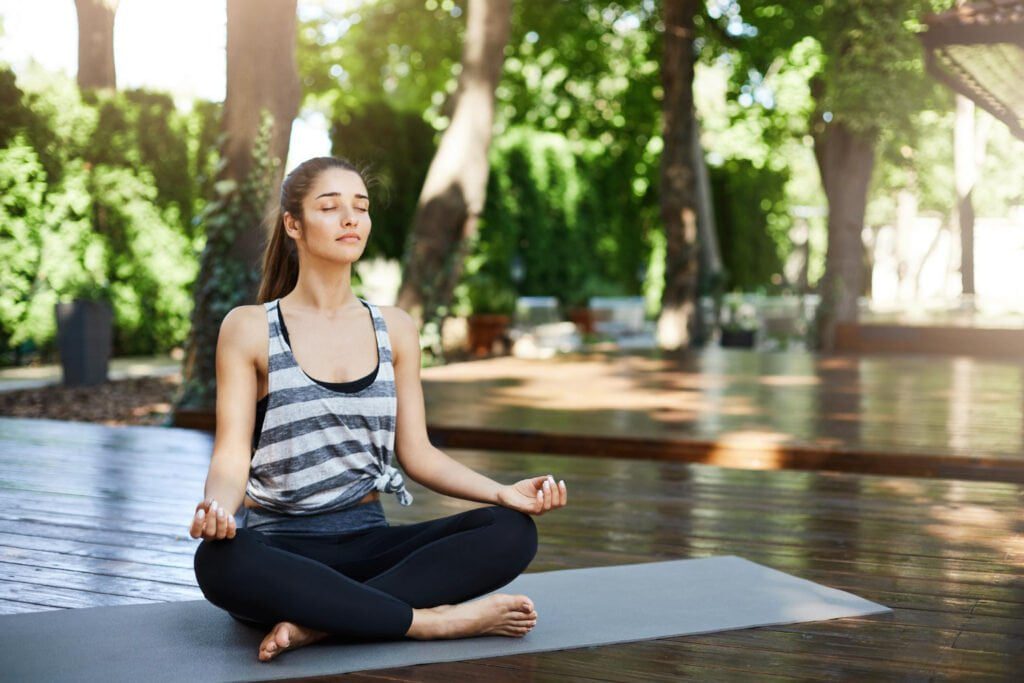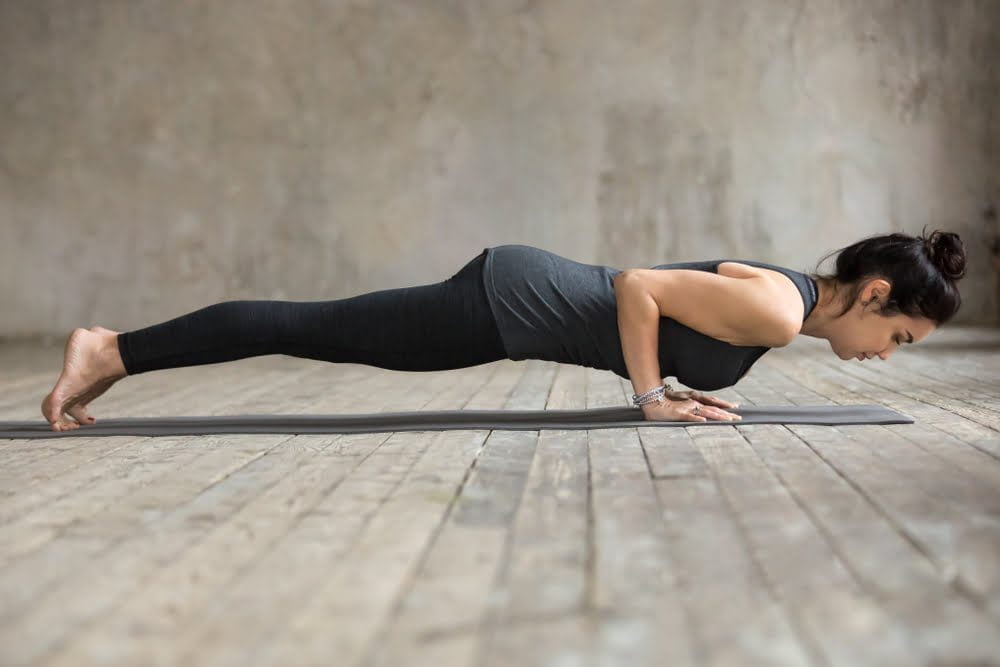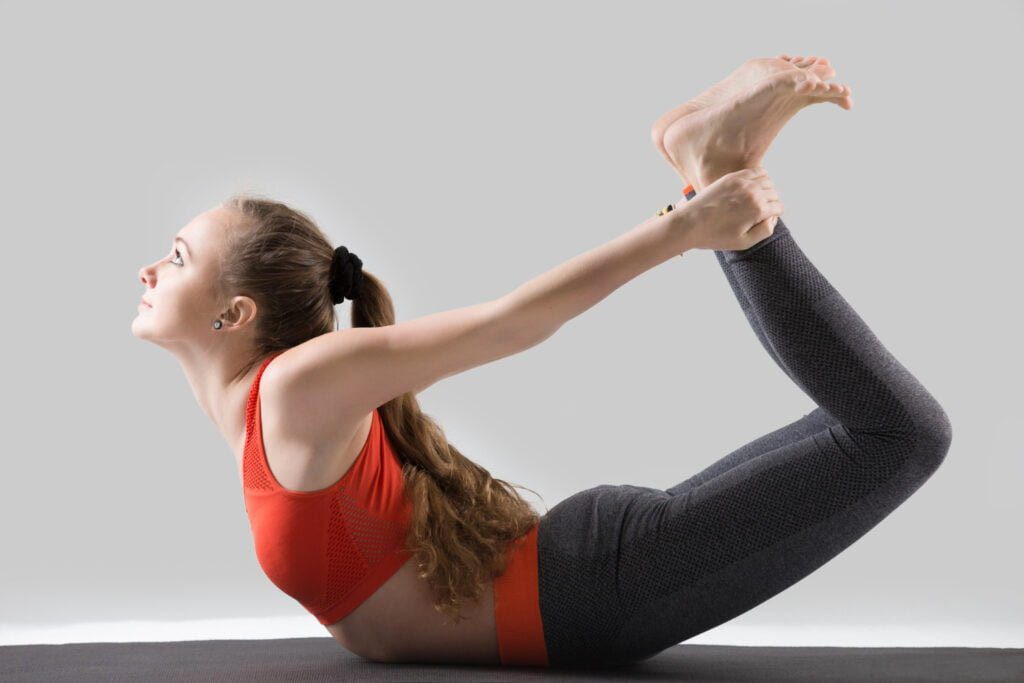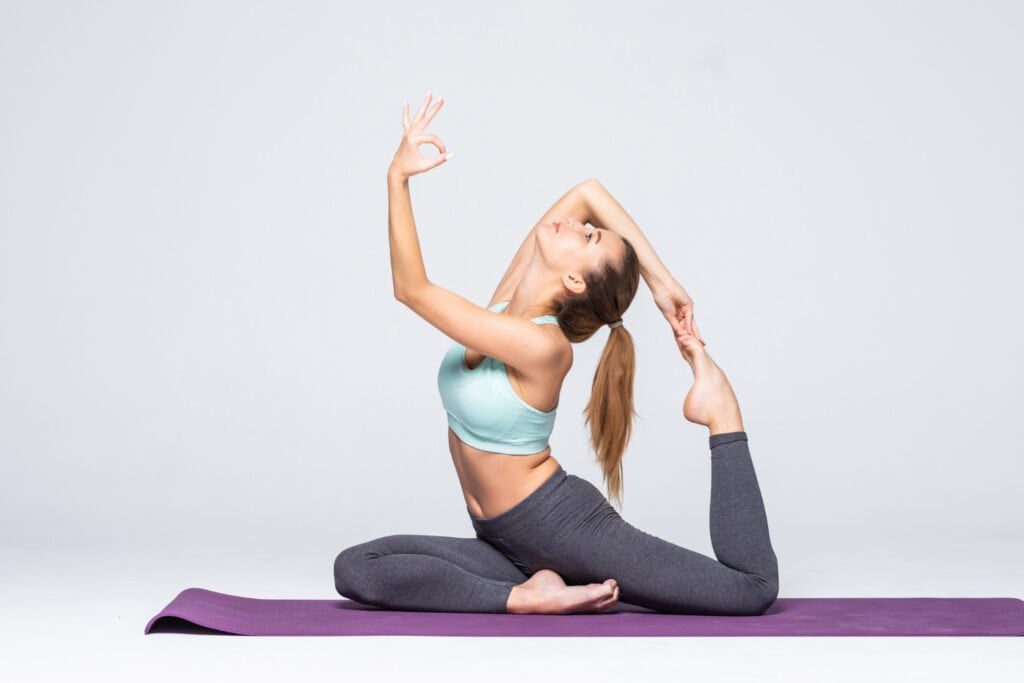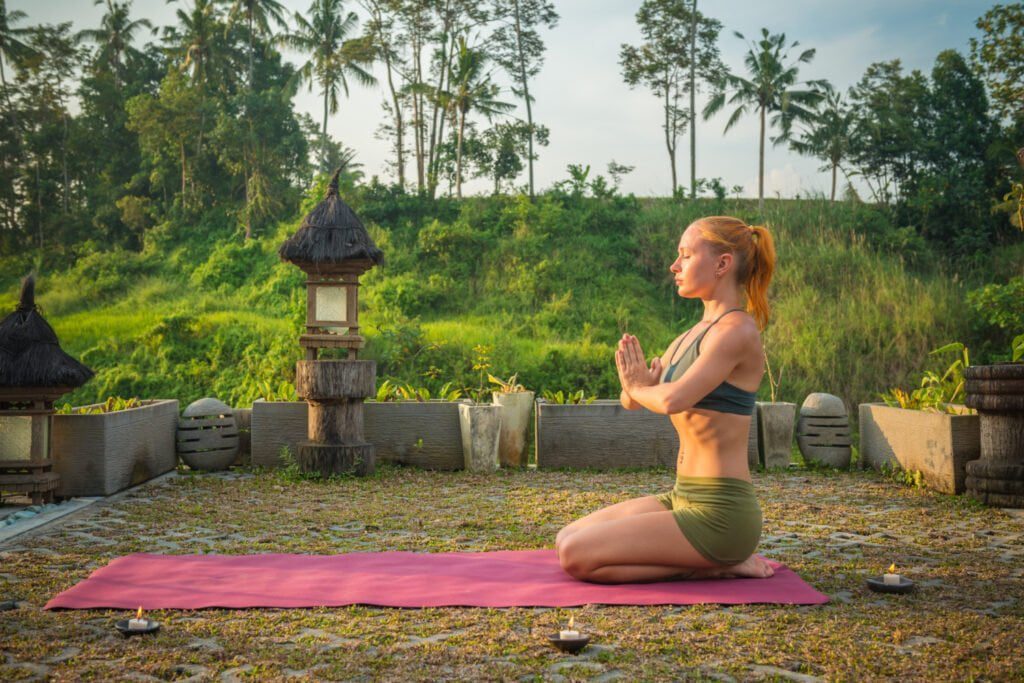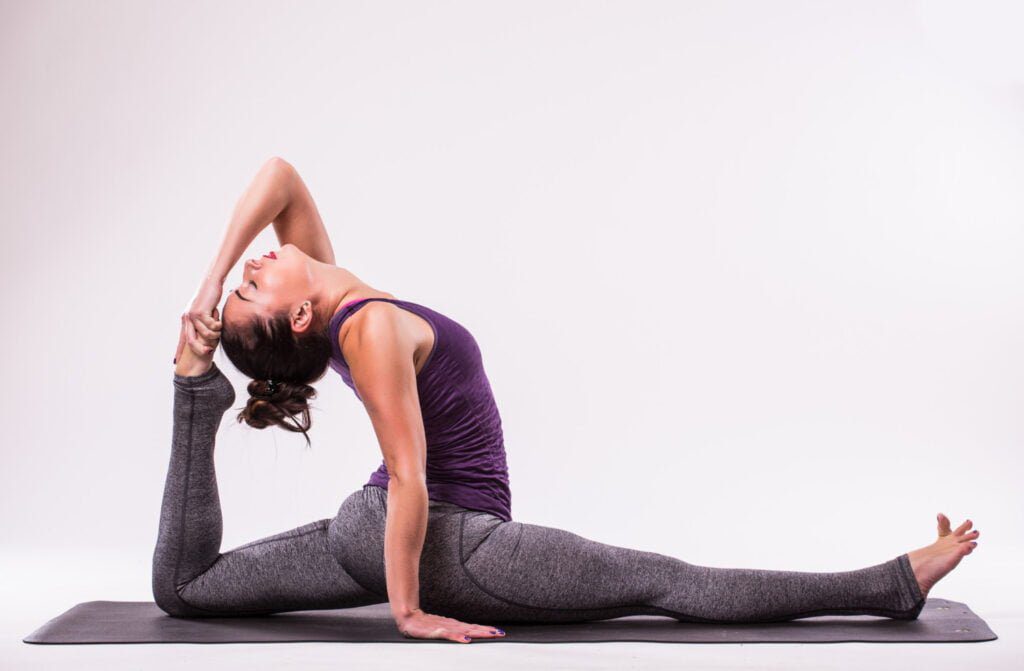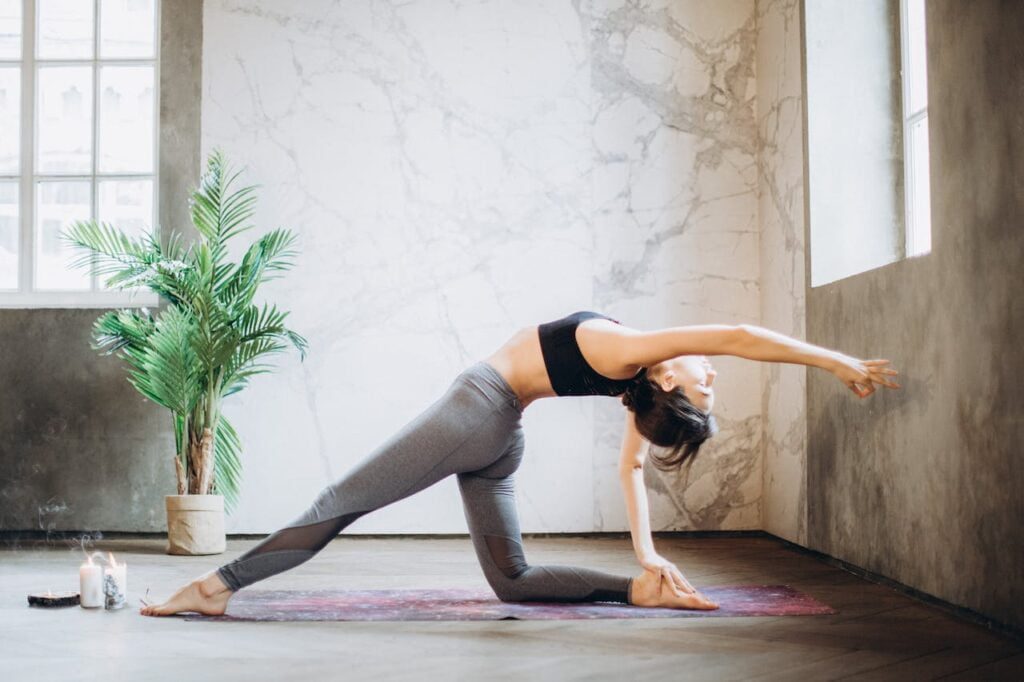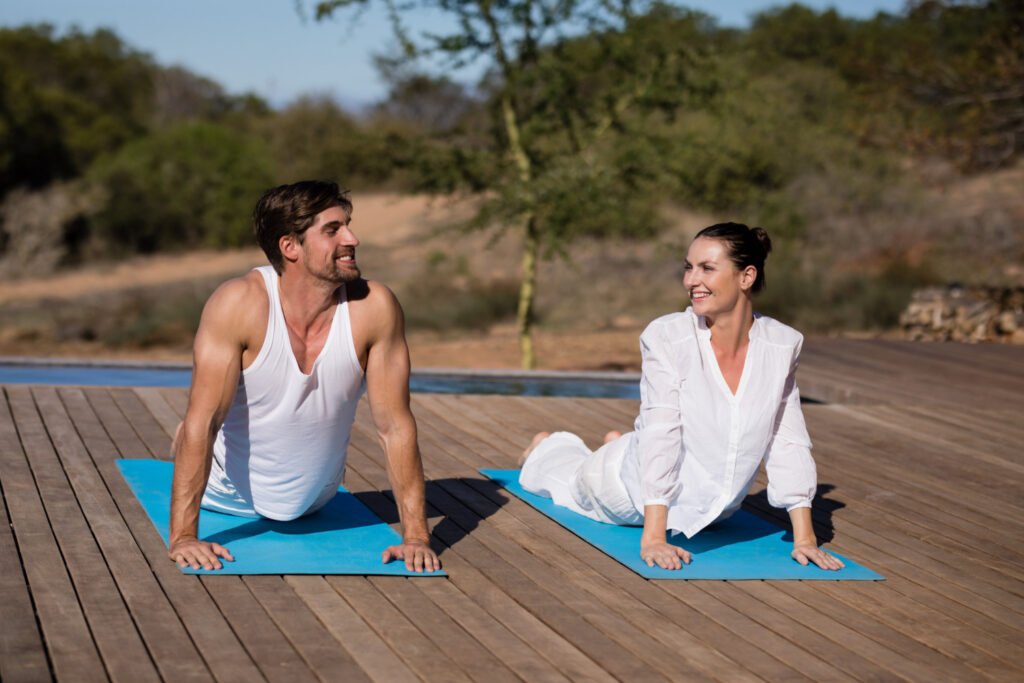Magic Ten was created by Sharon Gannon, founder of Jivamukti Yoga, as a perfect sequence to warm up the body before a yoga session, but also as a chain of 10 asanas ideal for waking up the body first thing in the morning and beginning the day with energy and balance.
It contains all the movements of the spine (flexion, extension, twisting, lateral flexion) so, repeated daily, the practitioner feels how the body soon becomes more agile, mobility is gained and posture is corrected .
10 Magical Postures of Jivamukti Yoga.
1. Adho Mukha Svanasana.
Step by step : Face down and with the palms of your hands resting on the sides of your chest, exhale and lift your body off the ground by stretching your arms and bringing your sit bones up and back until your feet rest on the floor. Hold 10 breaths.
2. Uttanasana Variation.
Step by step : From the previous position, walk with your feet towards your hands, let your hands touch the floor in front of your feet and keep your legs and arms straight. Hold 10 breaths.
3. Malasana.
Step by step : Opening your legs slightly wider than hip-width, lower your hips to the floor with your back straight. Press your elbows into your knees to open your hips and ensure that your spine is lengthened while your shoulders remain relaxed. Hold 10 breaths.
4. Twist.
Step by step : Sitting with your legs stretched, rest your feet on the floor and leave them straight, also leave your legs together. Turn from the waist to the right side and hug your knees with your left arm, bringing your right hand to the floor. Hold 5 breaths with the spine fully elongated and change sides.
5. Ardha Matsyendrasana.
Step by step : Sitting on the floor with the trunk upright and legs stretched, bend the right leg and pass it over the left until the sole of the right foot rests on the floor. Hug the right thigh with the left arm using leverage and rotate the spine to the right. Hold 5 breaths and change sides.
6. Purvattanasana.
Step by step : Sitting on the floor with your feet hip-width apart, place your hands behind you with your fingers pointing toward your feet. Inhale and as you exhale, raise your trunk, raising your pelvis higher than your knees. Drop your head back and make sure your ankles are under your knees and your wrists are just below your shoulders. Hold 10 breaths.
7. Handstand (on the wall).
Step by step : With your hands on the floor, give a push by raising your legs to verticality. Let your head loose. Hold at least 10 breaths and pause in Balasana or Uttanasana.
8. Chest Opening.
Step by step : Standing in Tadasana, interlace your fingers behind your back, press your palms toward each other, and separate your arms from your pelvis. Leaving the pelvis neutral, the chest rises and the chin presses the sternum forward. Hold 5 breaths.
9. Side Bends.
Step by step : From Tadasana, bring your arms stretched above your head, interlace your fingers and press your palms together. Inhale and as you exhale let your trunk fall to the left side. Inhale returning to the center and as you exhale fall to the right side. Repeat 5 times.
10. Standing Spinal Roll.
Step by Step :
Spinal Roll phase 1.
PHASE 1: From Tadasana with the fingers interlaced behind the head, arch the trunk backwards in three phases (Inhale and fall back when exhaling). Return to Tadasana.
Start of Spinal Roll phase 2.
PHASE 2: From Tadasana, place the chin on the chest and lower forward until touching the head on the knees in 8 phases (Inhale and when exhaling, round the spine and lower).
End of Spinal Roll phase 2.
PHASE 3: Lift with legs bent until the trunk is at a 90º angle with respect to the legs (variant of Utkatasana). Return to Tadasana.
PHASE 4: From Tadasana, repeat the first phase back once again.
Bottom Line.
The postures of Jivamukti Yoga offer a comprehensive and holistic approach to physical, mental, and spiritual well-being. By incorporating elements of mindfulness, breathwork, and philosophy into each pose, practitioners can cultivate a deeper connection to themselves and the world around them. Through regular practice, individuals can experience increased strength, flexibility, and inner peace, ultimately leading to a more balanced and fulfilling life. Embracing the postures of Jivamukti Yoga can not only transform the body, but also the mind and spirit, creating a more harmonious and enlightened existence.

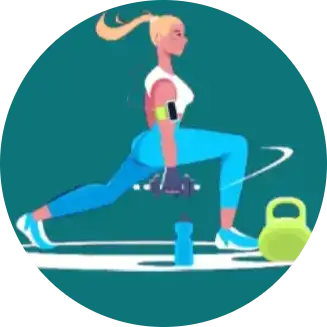 Workout
Workout
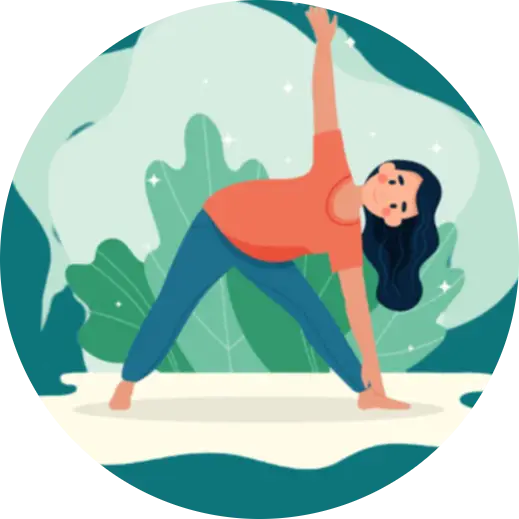 Meditation
Meditation





 Contact Us
Contact Us

